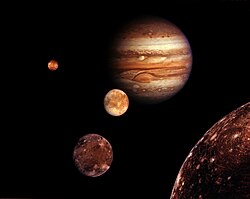External links
- Institute for Astronomy Saturn Satellite Data
- MPEC 2006-M45: Eight New Satellites of Saturn June 26, 2006 (discovery and ephemeris)
| Geography | |
|---|---|
| Moons | |
| Astronomy | |
| Exploration | |
| Related | |
Natural satellites of the Solar System | ||
|---|---|---|
| Planetary satellites of | ||
| Dwarf planet satellites of | ||
| Minor-planet moons | ||
| Ranked by size | ||
Listed in approximate increasing distance from Saturn | |||||||||
| Ring moonlets | |||||||||
| Ring shepherds | |||||||||
| Alkyonides | |||||||||
| Large moons (with trojans) | |||||||||
| Inuit group (36) |
| ||||||||
| Gallic group (17) |
| ||||||||
| Norse group (197) |
| ||||||||

